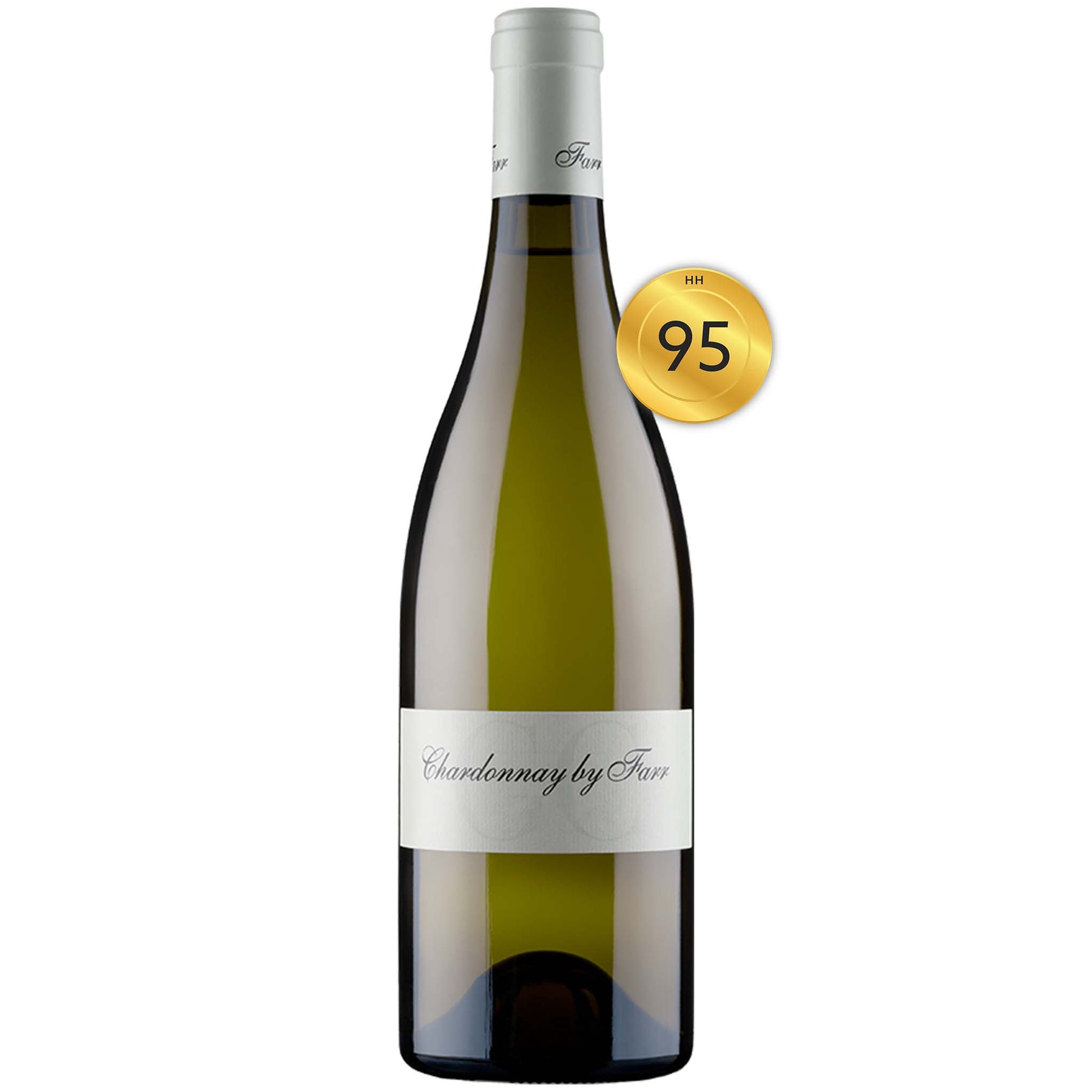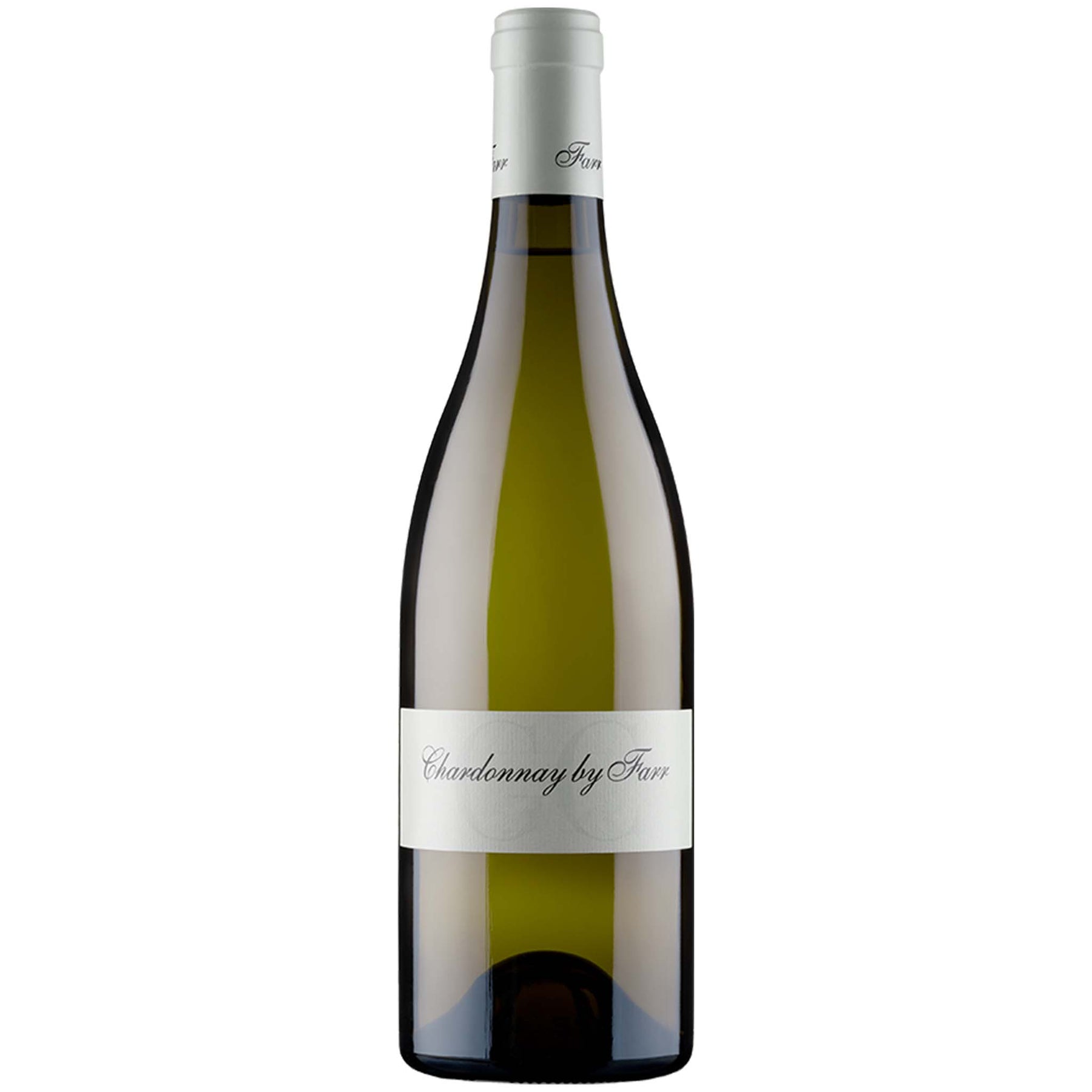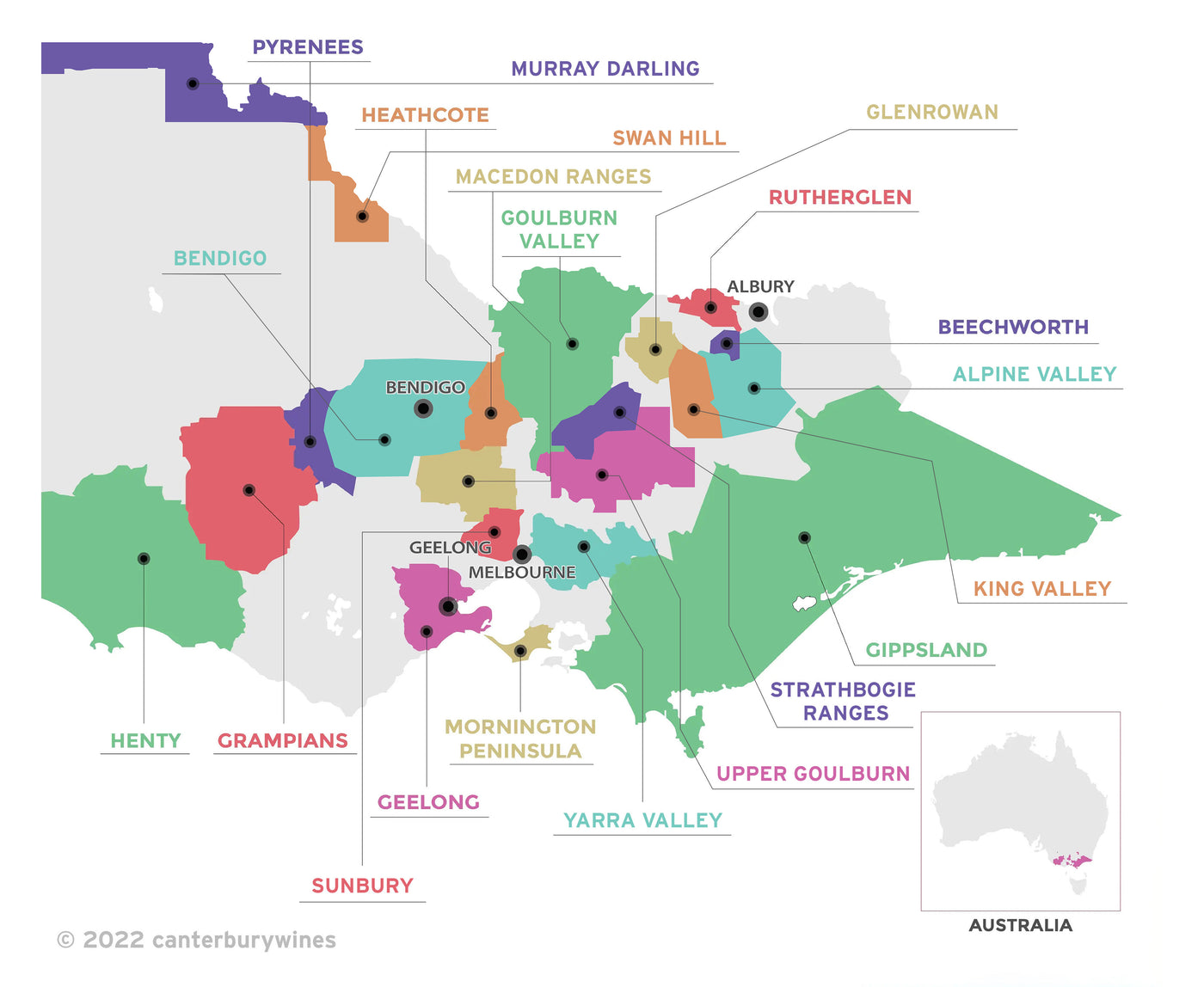

By Farr Chardonnay 2021
Style: White Wine
Closure: DIAM Cork
By Farr Chardonnay 2021
Warehouse
34 Redland Drive
Vermont VIC 3133
Australia
Critic Score: 95
Alcohol: 13.5%
Size: 750 ml
Drink by: 2030
The By Farr Chardonnay is an exceptionally refined and complex chardonnay. The chardonnay vines are planted next to the Sangreal pinot noir. The vines are now over 25 years old and are a mix of Dijon and Penfolds 58 clones. The red volcanic soil over limestone imparts the trademark minerality to the wine.
"Reserved, quiet bouquet of stone fruits including white peach and pear, a hint of fresh-baked bread, the palate delicate and restrained, soft and round, with a clean, dry finish enhanced by a trace of grip. There's good intensity and the wine has a seamless balance. It should build richness and complexity with a little more time." Huon Hooke
"The trademark characteristics of the wine produced on our site are understated power and length with a mineral finish. The wine has a great fruit expression that is well integrated with French oak. The soil characteristics have come through in the style of wine we have today. The palate is fine but firm, with great acidity, texture and length. This wine is rich in flavour, yet very refined.
The By Farr chardonnay comes from the same site as the Sangreal pinot noir - composed of red soil over limestone - and was planted in 1994. The limestone of this site is not exposed on the surface as at other sites. The limestone starts 20 to 30cm below the surface, to the depths of the root zone of the vines. It is a very exposed north-facing slope. The clones used for the chardonnay are a mixture of Dijon clones and Penfolds 58.
The fruit is hand-picked then whole-bunch pressed in the winery. All the solids are collected and chilled before being put to barrel, which is 30 percent new French oak. A natural fermentation will occur at cool temperatures over the next one to two months, and then a small amount of stirring helps start malolactic fermentation. The wine is then racked, fined and lightly filtered before bottling 11 months after picking. A very mineral site for chardonnay." By Farr
Huon Hooke and Nick Farr discuss By Farr: Australian Winery of the Year 2022
Expert reviews
"Reserved, quiet bouquet of stone fruits including white peach and pear, a hint of fresh-baked bread, the palate delicate and restrained, soft and round, with a clean, dry finish enhanced by a trace of grip. There's good intensity and the wine has a seamless balance. It should build richness and complexity with a little more time. Drink: 2022–2030." Huon Hooke, The Real Review - 95 points
By Farr chardonnay
 The Sangreal vineyard: Chardonnay vines in the foreground and the soil profile: red volcanic soil over limestone
The Sangreal vineyard: Chardonnay vines in the foreground and the soil profile: red volcanic soil over limestone
"You may not immediately think of Australia as a cool-climate region but as Brian Croser forcefully pointed out in Australian vineyards – not that hot actually, 'Of Australia’s 65 official wine regions, 24 are as cool as or cooler than Bordeaux and that is counting the whole of Tasmania as one region, one of the 24.' Not that Bordeaux is particularly cool at the moment, with heatwave temperatures reaching a record 41.2 ºC.
The fruit for the By Farr Chardonnay 2017 comes from the Farrs’ Sangreal site in Geelong, Victoria, about 80 km south-west of Melbourne and at an elevation of 120 m (390 ft). The vines, now 25-years-old, are a mix of Dijon and Penfolds 58 clones planted on red soils over limestone, and significantly cooled by the maritime influence from Port Phillip Bay.
The winemaking is straightforward: hand-picked grapes are whole-bunch pressed then chilled and fermented at a relatively cool temperature by indigenous yeasts in French oak barrels, of which about 35% were new. The wine was stirred just to encourage malolactic conversion.
The barrel fermentation and the time on the lees has given the wine a creamy quality and a richness in the mouth but it is not an overtly oaky wine – though the oak does seems to give a spiciness on the palate – and what I particularly liked about it was the combination of generous fruit and the more subtle stony and fresh citrus aromas and flavours. It’s full-flavoured but without excess, totally mouth-watering and moreish: New World fruit intensity with cool-climate finesse. The alcohol is a moderate and balanced 13%.
You may baulk at the price but I think it’s good value compared with the equivalent quality from, say, Burgundy, even though it is very much its own style and not imitating any other region. Garry Farr worked 10 vintages at Domaine Dujac, and Nick appears to be sporting a Domaine Dujac T-shirt, so there's no doubt about the style of Chardonnay they admire. Not an everyday wine, perhaps, but worth every penny or dollar."
The above text is from an article by Julia Harding MW in July 2019 that appeared in jancisrobinson.com
About the winery

The Farr estate is located in the Moorabool Valley between Geelong and Ballarat, 100km southwest of Melbourne. Grape growing in this region dates back more than 200 years, with Swiss settlers planting Victoria's first vineyards here in the early 1800s. The rich volcanic soil and continental climate at the estate produce premium fruit with a flavour, bouquet and colour that is unique to our surrounding area.
Gary and Robyn Farr purchased the original property in 1994 and the second section in 1998—this latter had been untouched for almost 40 years and consisted of dense boxthorn and noxious weeds. The final piece of the puzzle, which links the two blocks of land, was purchased by their son Nick in 2011, making a total of 130 acres—of which 36 acres are under vine and the remainder is maintained as grazing and cropping for cattle and horses. With a mixture of different clones and rootstocks, the grape varieties grown here are viognier, chardonnay, pinot noir, gamay and shiraz.
Notoriously brusque but hugely admired and loved, Gary Farr has been making wine in the Moorabool Valley, Bannockburn since 1978. While the landscape has undergone many changes in the past decades, Gary's approach to wine has not and it is this fastidious attention to detail that has inspired a whole generation of vignerons. His experience as a hands-on winemaker was shaped by time spent at Domain Dujac in Burgundy, Cristom in Oregon and Calera in California. Gary developed an appreciation for the beauty of shiraz and viognier from his many journeys to France's Rhone Valley, where he also learned techniques for incorporating these wonderful varieties into his winemaking.
The baton has now been passed on to Nick to carry on the Farr legacy. Nick Farr readily acknowledges the influence of his father in his winemaking and viticultural practices—however, these have been significantly enhanced by his own vast experience. While he was growing up, Nick often worked alongside his father on the family estate before a stint at Rosemount in the Hunter Valley in the late 90s. This was followed by more vintages with Gary as well as at Innisfail Vineyards in the Bannockburn area, where Nick commenced his label Farr Rising. Like his father, Nick has experience at international vineyards, including Cristom in Oregon, Au Bon Climate in California, and Domain Dujac in Burgundy. The reins may have been handed over to the next generation, but Gary, who produced what legendary wine connoisseur Len Evans called 'Australia's best pinot', still keeps a watchful eye over proceedings to ensure the wine continues to meet his high standards.
"The wines we make are not mainstream—they are expressions of our vineyard, our land and what we like to drink. That is what we promise to deliver." Nick Farr
Climate and soils
"The microclimate of the Moorabool Valley is influenced by winds from the western plains and bracing sea breezes, which regulate the temperature on long, sunny days and cool the air overnight. This climate is key to producing naturally balanced, low-yield fruit that is rich in flavour.
The region's environment is both cool and harsh for viticulture, due to the low rainfall and ever-prevailing winds that sweep across the barren western plains of Victoria. On average we receive 240mm of the 540mm annual rainfall in the growing season. The variation of temperatures between night and day helps us achieve complex and long-palate structures in our wines. Farming our land is not easy, but we believe the best wines are born from the most challenging environments.
Our vineyards are based on ancient river deposits within the Moorabool Valley. Thousands of years later, we are reaping the rewards of these complex and mineral-rich soils, which lend their unique characteristics to our grapes.
There are six different soils spread across the Farr property, with the two main types being rich, friable red and black volcanic loam, and limestone, which dominates the loam in some areas. The other soils are quartz gravel through a red volcanic soil, ironstone (called buckshot) in grey sandy loam with a heavy clay base, sandstone base, and volcanic lava rock. The soil's good drainage and low fertility are crucial in ensuring small yields of intensely flavoured fruit.
The soil structure and microclimate at our vineyard make it ideal for growing pinot noir and chardonnay, and our location rates among the world's best for both varieties." By Farr

Victoria
Victoria is home to more than 800 wineries across 21 wine regions. The regions are Alpine Valley, Beechworth, Bendigo, Geelong, Gippsland, Glenrowan, Goulburn Valley, Grampians, Heathcote, Henty, King Valley, Macedon Ranges, Mornington Peninsula, Murray Darling, Pyrenees, Rutherglen, Strathbogie Ranges, Sunbury, Swan Hill, Upper Goulburn and Yarra Valley.
Victoria's first vines were planted at Yering in the Yarra Valley in 1838. By 1868 over 3,000 acres had been planted in Victoria, establishing Victoria as the premier wine State of the day. Today, the original vineyards planted at Best's Wines are among the oldest and rarest pre-phylloxera plantings in the world.
Victoria's climate varies from hot and dry in the north to cool in the south and each wine region specialises in different varietals. For example, Rutherglen in the north is famous for its opulent Muscats and Topaque and bold reds, while the many cooler climate regions near Melbourne produce world class Chardonnay and pinot Noir. Victoria is truly a wine lover's playground.

